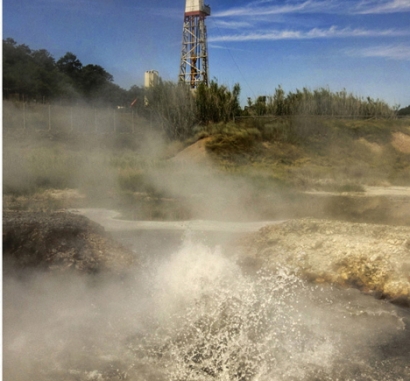
The grants were funded through the CEC’s Electric Program Investment Charge (EPIC) program, the state's premier public interest research initiative which drives clean energy innovation and entrepreneurship.
Among today’s awards is a $1.7 million project at Lawrence Berkeley National Laboratory designed to demonstrate how seismic and electromagnetic data can map geothermal reservoirs and create enhanced imaging of their structural features to better locate and place production wells. The demonstration will occur at The Geysers, the world's largest geothermal field located in Sonoma, Lake, and Mendocino Counties.
“Geothermal is a clean and sustainable power source, and we are fortunate to have such vast resources in the state,” said CEC Vice Chair Janea A. Scott. “Nearly half of the known resources remain untapped mainly because of the high initial costs. EPIC funding can help address those barriers by finding technical solutions that reduce costs, increase productivity, and encourage future commercial investments in geothermal.”
California is home to some of the world’s most abundant geothermal resources. The more than 40 geothermal power plants operating in the state tap into naturally-occurring superheated underground reservoirs providing more than 2,700 megawatts of renewable energy capacity. In 2018, geothermal energy produced more than 11,500 gigawatt-hours of generation in the state. However, that represents less than 6 percent of the overall energy produced by the state in 2018, far less than the amount of renewable energy produced by wind and solar.
Lithium extraction
California’s energy goals will also be met by using batteries to store energy. Some of the most efficient battery types use lithium as a key element, and uniquely high concentrations of the dissolved soft metal are found in the brine produced by the state’s geothermal hotspots.
Lithium recovery projects awarded today are designed to help reduce costs and environmental impact. They include:
In recent years the global demand for lithium has increased significantly as clean energy resources rapidly replace fossil fuels in the transportation, building, and energy sectors.
California’s vast lithium deposits – as much as one third of the world’s current lithium demand according to some industry estimates – are also seen as a way to propel the state’s green economy. Deposits in the Imperial Valley alone could potentially produce up to $860 million annually in revenues, according to the U.S. Department of Energy’s National Renewable Energy Laboratory.
Because of the huge impact lithium recovery could have on the state; the ecosystem of new business, investments, and jobs it could create; and the transformative effect it would have on clean energy, some are dubbing the emerging industry as “Silicon Valley 2.0” or “Lithium Valley.”
For more information about lithium recovery efforts in California and beyond, click here to view presentations and an archived recording of the California’s Lithium Recovery Initiative Symposium held February 12, 2020.

